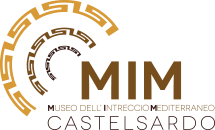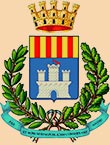Museo dell'intreccio mediterraneo di Castelsardo
Main site sections
Castelsardo: city of the Sabauda
In 1767 Castel Aragonese took the name of Castelsardo with the control of the city in the hands of Carlo Emanuele III of Savoy. Although located on the sea and equipped with a port, it became a small commercial and predominantly agricultural town. In this period there were clashes between farmers and herders for the occupation of farmland and resettlement of agricultural land by foreign workers took place. Hence the introduction of a system of taxation that was applicable both to citizens and to foreigners. The system did not have the desired effect: the foreigners took advantage of the negligence of some of the contractors to evade their tax obligations and imported the wheat to their homelands.
In 1760 a seminary was erected in the city, restored in 1777, at the behest of Bishop Ignazio Francesco Guiso. Requests to the Viceroy to build a school for children date to 1766 as does the parliamentary decision to set up a Mount of Piety, to be realized, however, only in the 1780's. And we must remember the economic commitment (about 400 pounds) that in '700 Castelsardo invested in the renovation of urban roads.
The city became less influential towards the first half of 1800, crushed by overly authoritarian landowners and by an impoverishment of cultural and social life.
At the end of the century the plague, arriving here much later than on the rest of the island, condemned the town to the poorest period of its history, which it overcame over the years thanks to funding by external administrators and to the industrial and tourist economy.


